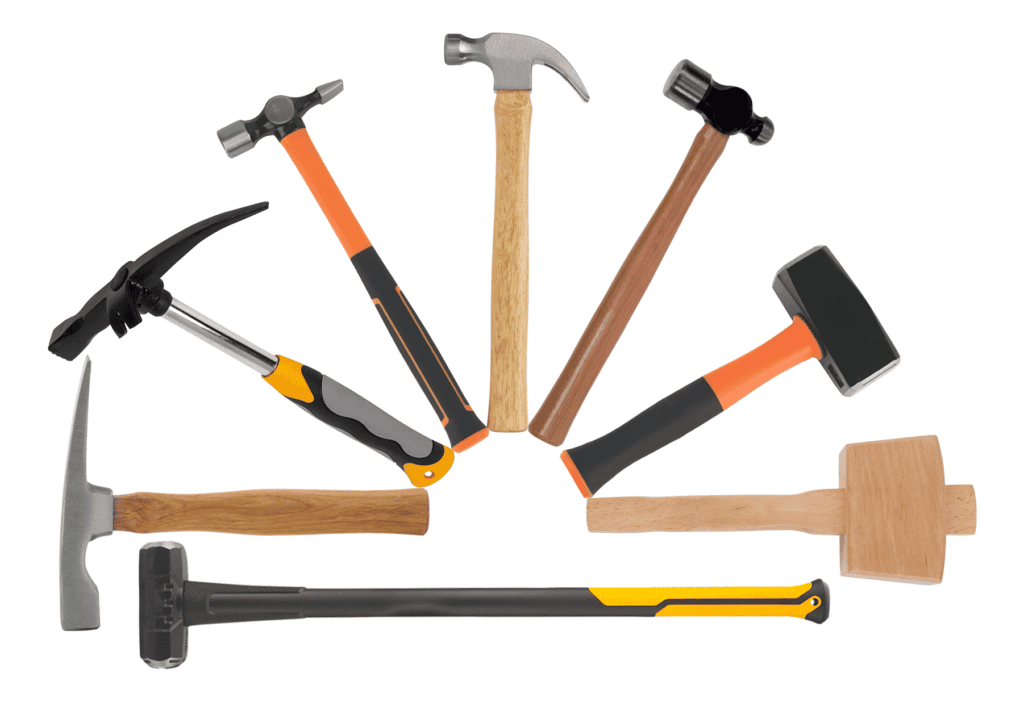How to use a hammer
A hammer, your sturdy and reliable partner in many home improvement projects, is a pretty straightforward tool to use, though there’s some finesse to getting the best results. Primarily, a hammer is used to drive nails into materials like wood or plaster; you can also use it to remove nails. Its simplicity belies its effectiveness – a flat face for hammering and a claw end for prying. When using a hammer, the key is control. You don’t want to swing wildly; instead, grip the handle towards the end for increased force and precision. Position the nail, hold it steady, and gently tap it into place to start. Once stable, you can use more force to drive it in fully. Remember, you aim to connect with the nail, not the surface you’re nailing into. Safety is paramount, so always keep your fingers clear of the strike zone. Like any tool, a little practice goes a long way to help you handle a hammer with confidence and ease.
Table of Contents
Types of hammers
Brick Hammer
A brick hammer, also known as a masonry hammer, is a handy tool that any DIY enthusiast should consider for their toolbox. Imagine a typical hammer but with a twist – one end of the head is flat for hammering, like a conventional hammer, while the other is chiselled, making it perfect for chipping or splitting bricks, blocks, or tiles. While it may seem like a tool made for professionals, don’t let that intimidate you! With some practice and caution, you can wield a brick hammer with ease and precision.
Common uses of a brick hammer
Breaking bricks, Chiselling masonry, Cutting tiles, Shaping stones
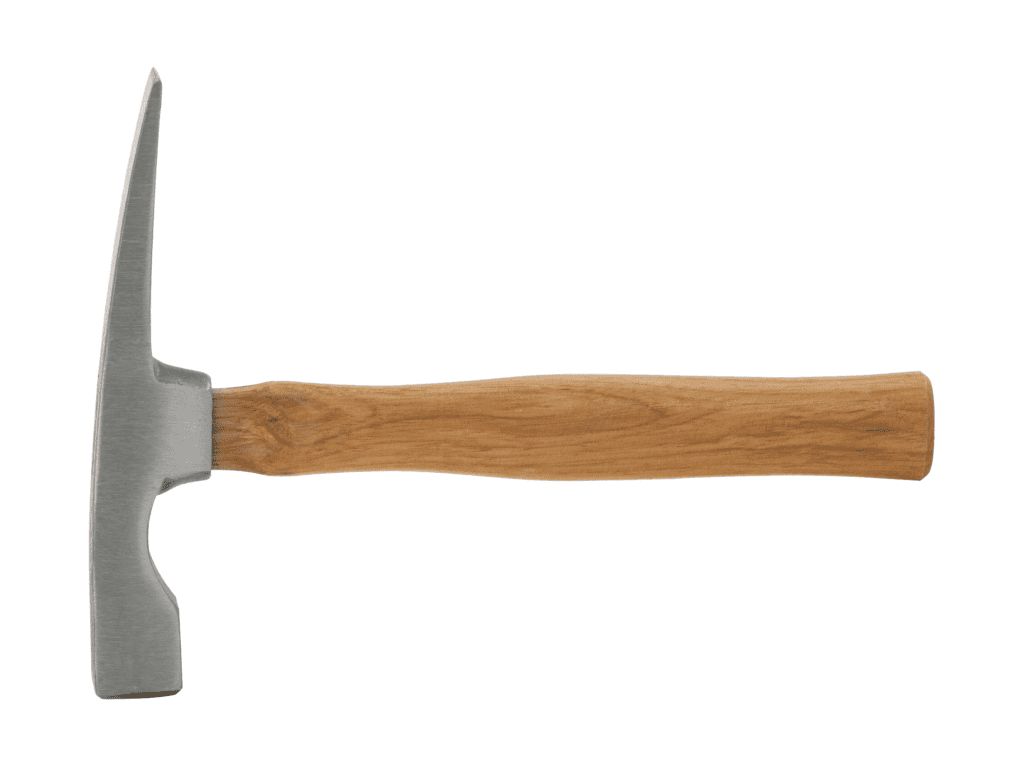
Brick hammer 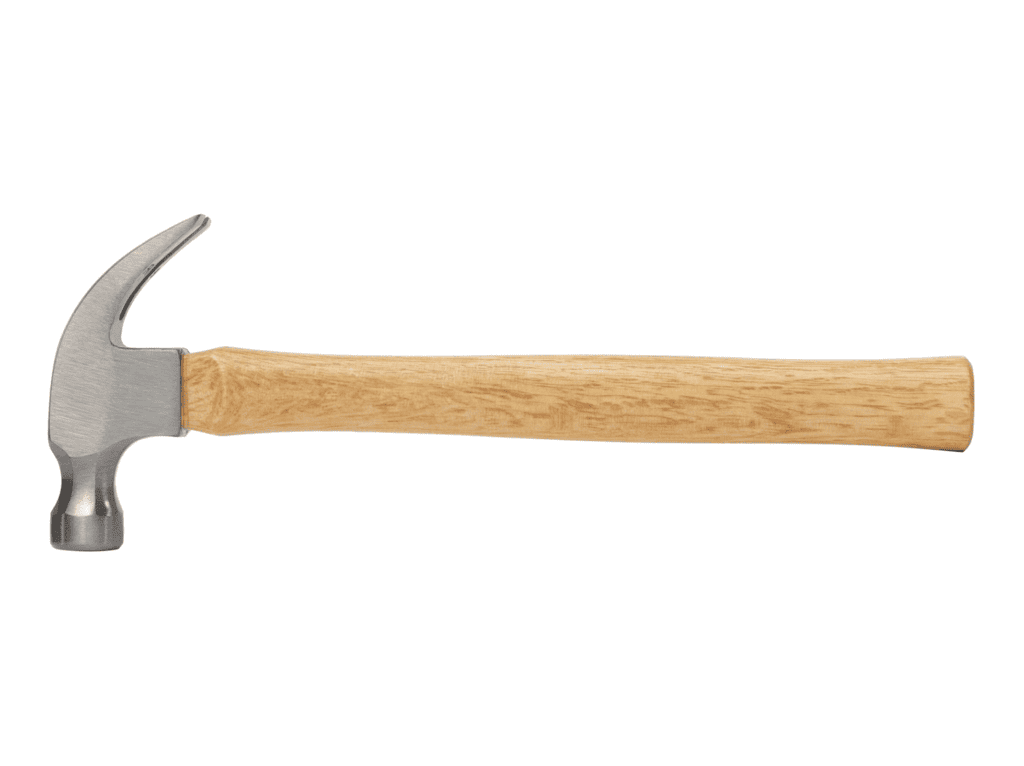
Claw hammer
Claw Hammer
A claw hammer is a multi-functional tool that finds its home in the kit of every home improvement and DIY enthusiast. Imagine it as the loyal sidekick in your adventures through woodwork and minor home repairs. The striking surface or ‘head’ delivers solid blows to nails, making it a cinch to hang pictures or assemble flat-pack furniture. The curved ‘claw’ at the opposite end provides leverage to remove nails or pry apart objects. Its simple design pairs efficiency and effectiveness, making the claw hammer a dependable companion for a myriad of tasks.
Common uses of a claw hammer
Driving nails, Pulling nails, Light demolition, Prying apart materials
Club Hammer
A club hammer, also known as a lump hammer or a drilling hammer, is a compact tool designed for delivering powerful, concentrated force. The head, typically weighing between 1 and 3 pounds, is ideal for driving in stakes, chisels, or masonry nails and breaking up hard materials like concrete or stone. Compared to a sledgehammer, it has a smaller, lighter profile that lends itself to use in restricted spaces or for jobs that don’t demand excessive power. The short handle is typically made of wood, fibreglass, or sometimes steel, offering a secure grip and balanced control. As a staple in construction and masonry, a club hammer plays a vital role in various heavy-duty tasks where precision and power are required.
Common uses of a club hammer
Breaking up concrete, Driving steel chisels, Driving masonry nails, Shaping stone
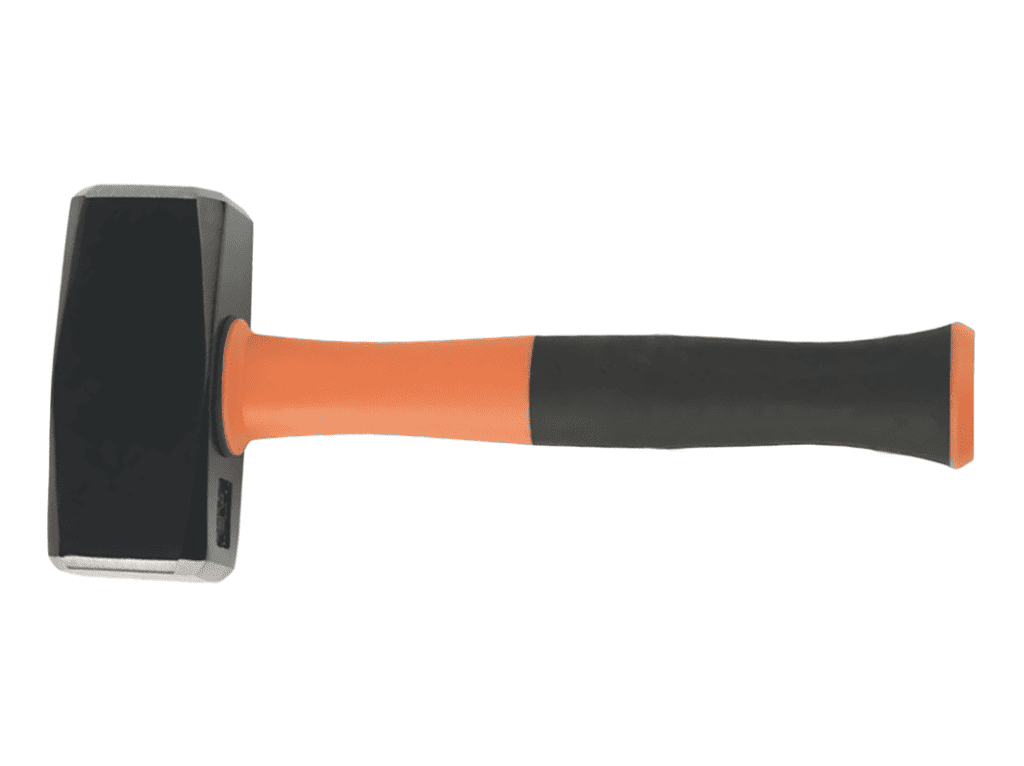
Club Hammer 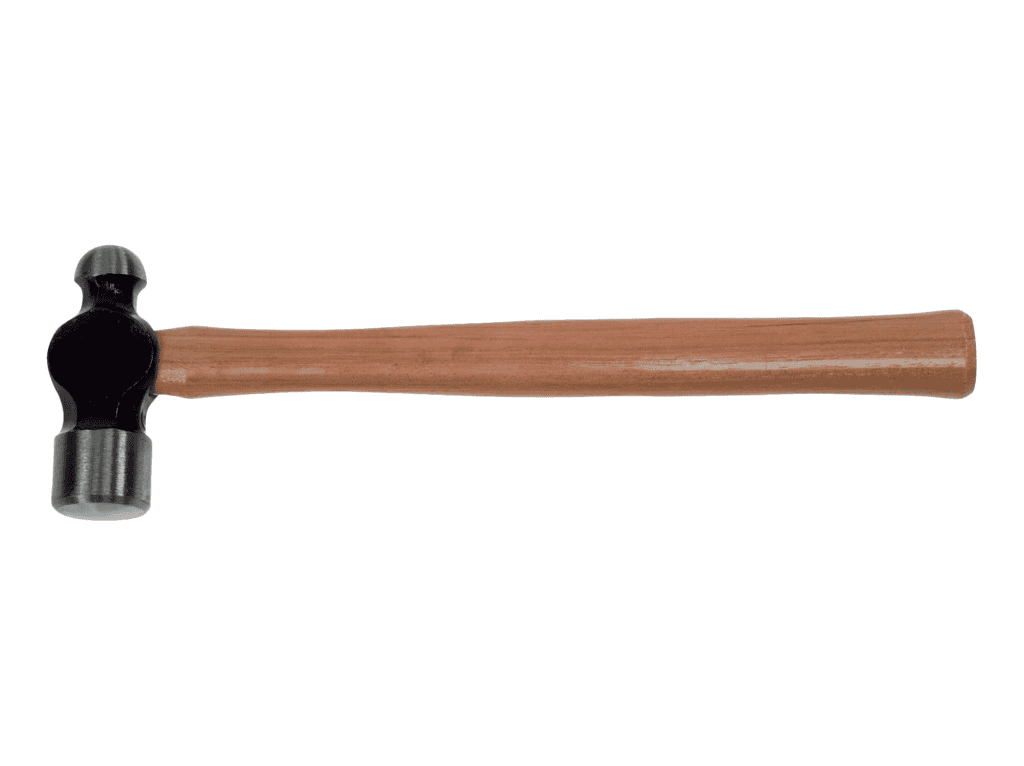
Ball Pein Hammer
Ball Pein Hammer
A ball pein hammer is an indispensable tool that should take pride of place in any DIY enthusiast’s toolbox. The defining feature of this tool is its dual-sided head; one side flat, like a regular hammer, and the other rounded, or ‘pein’. The flat side is perfect for general-purpose hammering, like driving nails into wood. On the other hand, the rounded ‘pein’ end is specially designed for shaping metal, riveting, and creating neat, round impressions. So, a ball pein hammer could be your trusty ally, whether hanging a picture or embarking on a more ambitious metalwork project. It’s versatile, practical, and straightforward to use – an ideal addition to your home improvement repertoire!
Common uses of a ball pein hammer
Peening rivets, Shaping metal, Striking chisels, Rounding edges of pins and fasteners
Cross Pein Hammer
Like its cousin, the ball pein hammer, the cross pein hammer is an incredibly handy tool that deserves a spot in every DIY devotee’s arsenal. At first glance, they may seem similar; both have a standard flat face for everyday tasks like driving nails. However, the cross pein hammer features a wedge-shaped blade instead of a rounded’ pein’ at its other end. This ‘cross pein’ is typically used for starting nails or tacks without the risk of hitting your fingers – a feature that could save you from some nasty bruises! It’s also ideal for shaping and bending metal, much like the ball pein, but with a bit more precision due to its sharp, blade-like design. So, if you’ve ever been frustrated trying to hammer a small nail or wished for a tool that allows for delicate metal shaping, a cross pein hammer could be the answer you are looking for.
Common uses of a cross pein hammer
Starting panel pins, Tacks, Shaping metal, Blacksmithing, Joinery work
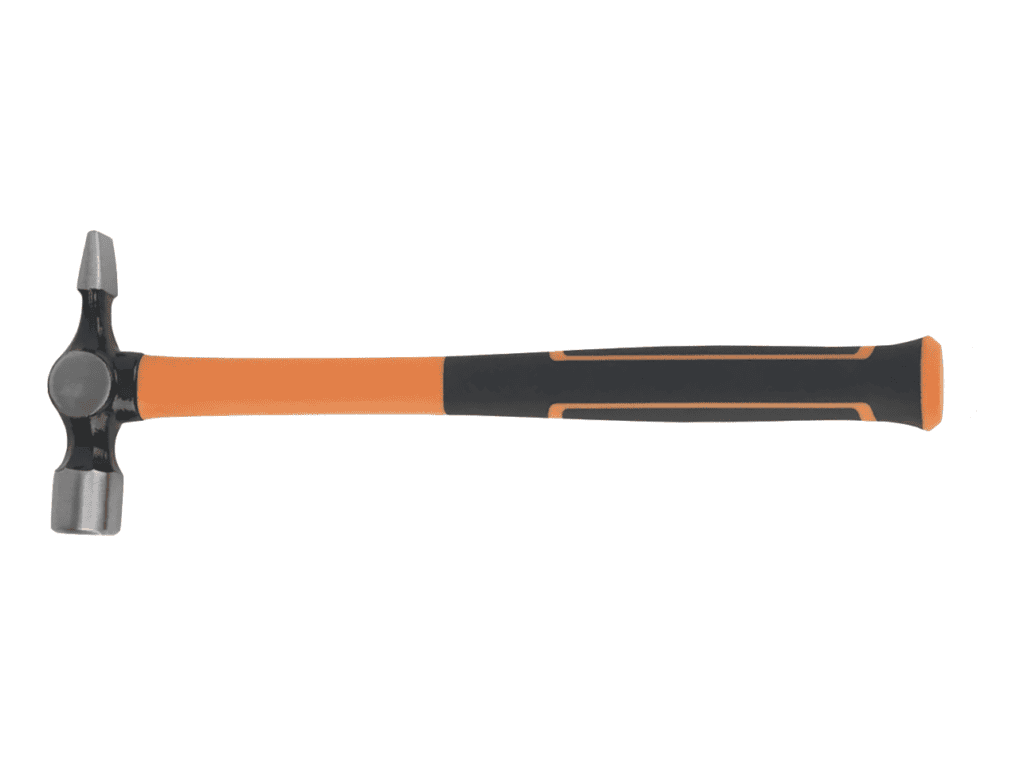
Cross Pein Hammer 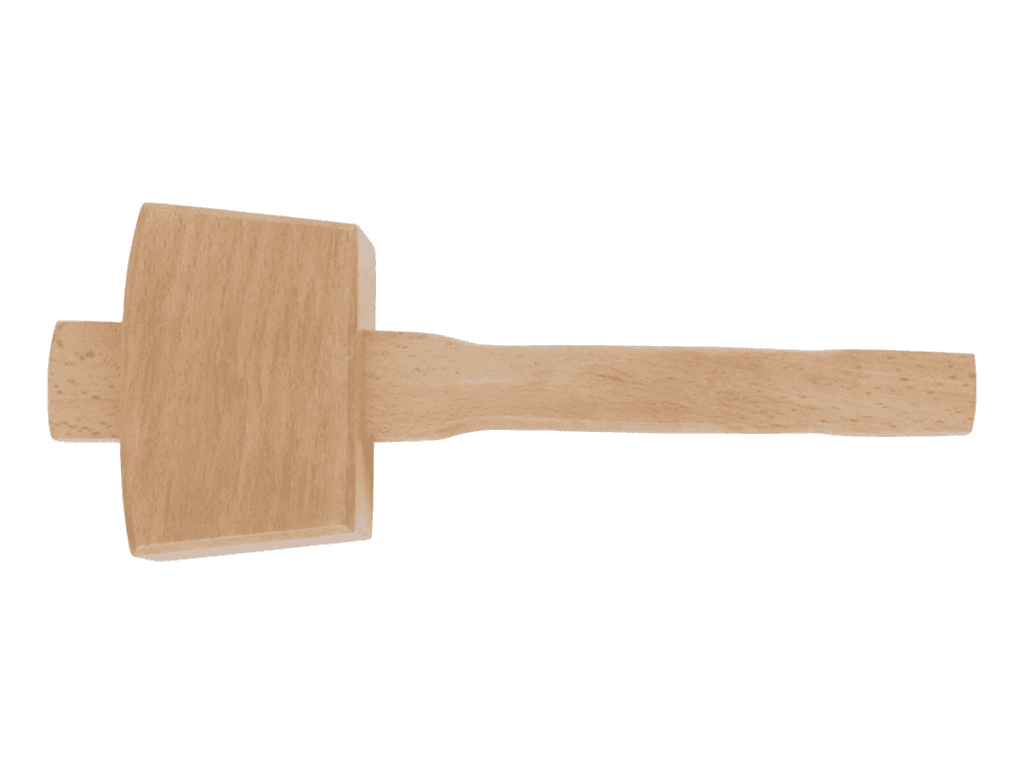
Mallet
Mallet
What is a mallet and how is it different from a hammer?
A mallet is like a hammer, but what sets it apart is its non-metallic head, typically made of rubber, wood, or rawhide. This design enables it to distribute force more evenly and softly than a standard hammer, making it perfect for tasks that require a gentler touch, such as driving chisels or assembling delicate furniture pieces. Imagine tapping a new wooden dowel into a carefully crafted bookshelf without damaging the surrounding wood—that’s where a mallet shines.
Joiner’s mallet
A joiner’s mallet is a specific type of mallet used primarily in woodworking, especially in joinery. The head of a joiner’s mallet is traditionally made from a solid block of hardwood, and it is slightly angled so that when you’re swinging it, the head lands flat on the chisel handle. This design is beneficial for joinery tasks, such as mortise and tenon joints, where control and precision are required.
Common uses of a mallet
Installing hardwood floors, Assembling flat-pack furniture, Tiling tasks, Installing pavers, Shaping sheet metal
Sledgehammer
A sledgehammer, essentially a hefty sibling of your standard claw hammer, is an indispensable tool for tackling larger-scale home improvement or DIY projects. Primarily, it’s used for demolition, breaking down hard surfaces, like concrete and brick, or driving stakes and posts – think of it as the muscle you bring in when delicate taps just won’t cut it. Though it may seem intimidating, using a sledgehammer is about control rather than brute force, with the hefty weight of its large metal head doing most of the work for you.
Common uses of a sledgehammer
Breaking concrete, Splitting wood, Driving fence posts, Removing tile floors, Smashing heavy items

Sledgehammer 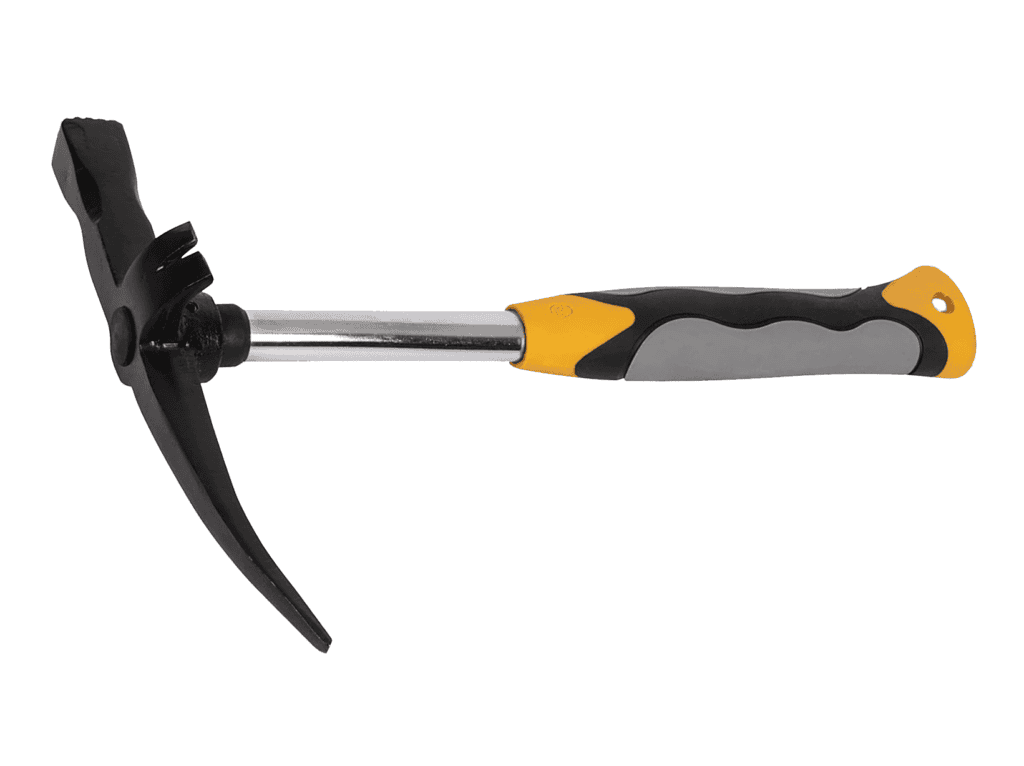
Slaters Hammer
Slaters hammer
As its name suggests, a slaters hammer is a specialised tool primarily used in roofing, specifically focusing on slate materials.
On one end, it features a sharp point used to punch holes in slate tiles; on the other, it has a small, sharp blade for trimming slate to precise dimensions. The slater’s hammer is primarily used in the professional installation and repair of slate roofs, where it facilitates efficient, accurate work by allowing the user to customise slate tiles for a perfect fit.
Common uses of a slaters hammer
Cutting roofing slates, Punching holes in slates, Shaping slates, Nailing slates to roofs
Specialist Hammers
Nylon Hammer
Known for its non-marring quality, a nylon hammer is perfect for assembling delicate furniture without causing any damage, like scuff marks or dents.
Soft Face Hammer
A soft face hammer, typically made with rubber or plastic, is your go-to tool for any job that requires a gentle touch, such as adjusting small parts or knocking pieces into place without leaving a mark.
Split Head Hammer
With interchangeable faces, the split head hammer provides versatility for various tasks — it’s great for working with different materials without switching tools.
Copper Hammer
A copper hammer is more than a striking tool. Made entirely of copper, this type of hammer is spark-resistant, making it a safe option when working in potentially explosive or flammable environments. The copper’s softer nature also helps protect the surface you’re working on from getting damaged while still delivering enough force for effective striking. A copper hammer makes an excellent tool for tasks like driving pins, shaping soft metals, or where surface protection is critical.
Framing Hammer
With its longer handle and heavier head, the framing hammer is perfect for significant construction tasks like framing a new wall or deck in your DIY home improvement projects.
Drywall Hammer
Specifically designed for installing drywall, a drywall hammer’s serrated face helps grip and hold the nail, while its axe-like back edge assists in quickly cutting the drywall to size.
What about a demolition hammer
The demolition hammer, a veritable workhorse hand tool, varies significantly in size and function. It can take the form of a small, handheld hammer, perfect for detailed deconstruction tasks and prying apart stubborn materials, or it can present itself as a mighty sledgehammer, serving as the go-to tool for heavier-duty demolition work, breaking up concrete and knocking down walls with determined ease. It’s worth mentioning, however, that the term “demolition hammer” may often refer to its power-tool counterpart. This electric or pneumatic variant enhances the demolition process through increased power and efficiency, and it is specifically engineered to manage tasks that require higher impact force, such as breaking through concrete or other resilient materials.
Powered alternatives to hammer
Powered nailers and demolition hammer drills can effectively serve as alternatives to traditional hammers, providing increased precision and reducing manual labour.

